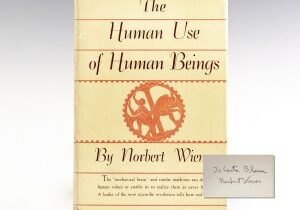[fusion_text] Benoit B. Mandelbrot was a mathematician who would completely change the way biologists view nature, the way financial advisors see patterns in markets, and eventually, the way computer animators design lively scenes in Pixar movies. But before his famous discovery of the Mandelbrot set in 1979, outlined in Fractals: Form, Chance, and Dimension, the mathematician was known for more or less shooting in the dark:
Benoit B. Mandelbrot was a mathematician who would completely change the way biologists view nature, the way financial advisors see patterns in markets, and eventually, the way computer animators design lively scenes in Pixar movies. But before his famous discovery of the Mandelbrot set in 1979, outlined in Fractals: Form, Chance, and Dimension, the mathematician was known for more or less shooting in the dark:
According to mathematics scientist Stephen Wolfram, the book was a ‘breakthrough’ for Mandelbrot, who until then would typically ‘apply fairly straightforward mathematics… to areas that had barely seen the light of serious mathematics before.’
So how did the “wandering scientist” become the “father of fractals”? Well, to start, Mandelbrot owed part of his success as a mathematician (and his life) to his parents, who emigrated with their son from Poland before the start of World War II. In Paris, at age 11, Mandelbrot was helped by Rabbi David Feuerwerker to continue his studies during a risky time. In one of his memoirs, Mandelbrot writes:
Our constant fear was that a sufficiently determined foe might report us to an authority and we would be sent to our deaths. This happened to a close friend from Paris, Zina Morhange, a physician in a nearby county seat. Simply to eliminate the competition, another physician denounced her… We escaped this fate. Who knows why?
Mandelbrot went on to achieve his masters in aeronautics at California Institute of Technology and his PhD degree in Mathematical Studies at the University of Paris.
Before coining the term “fractal,” Mandelbrot developed the “theory of roughness.” He began to examine “roughness” in the shapes of mountains, coastlines, and river basins, as well as the structures of plants, blood vessels, and lungs; and even in the clustering of galaxies. He felt that the very root of Geometry’s definition promised the truthful measurement of the untamed Earth. When Mandelbrot wrote The Fractal Geometry of Nature, a few of the mathematical objects he discussed had already been presented by past mathematicians. But unlike in Mandelbrot’s work, those objects were studied only as isolated curiosities with natural properties.
The Fractal Geometry of Nature is praised for the author’s informal, yet passionate style of explaining his ideas, often with many illustrations. In his book, Mandelbrot writes, “Clouds are not spheres, mountains are not cones, coastlines are not circles, and bark is not smooth, nor does lightning travel in a straight line.” Mandelbrot’s language made his work attractive to those who were not specialists in his field. And later, the Mandelbrot set would improve the lives and work of those outside of his field as well, including financial and computer experts. As described on the website:
In The (Mis)Behavior of Markets, Mandelbrot joins with science journalist and former Wall Street Journal editor Richard L. Hudson to reveal what a fractal view of the world of finance looks like. The result is a revolutionary reevaluation of the standard tools and models of modern financial theory. Markets, we learn, are far riskier are far riskier than we have wanted to believe. From the gyrations of IBM’s stock price and the Dow, to cotton trading, and the dollar-Euro exchange rate– Mandelbrot shows that the world of finance can understand in more accurate, and volatile, terms than the tired theories of yesteryear.
The ability to simplify the complex has made Mandelbrot one of the century’s moth influential mathematicians. With The (Mis)Behavior of Markets, he puts the tools of higher mathematics into the hands of every person involved with markets, from financial to economists to 401(k) holders.
Mandelbrot was considered a maverick in the math, science, financial, and parts of the tech community. Other rare works of his include Computer Experiments with Fractional Gaussian Noises, Parts 1, 2, and 3 and Extended Abstracts: Fractal Aspects of Materials.[/fusion_text]











